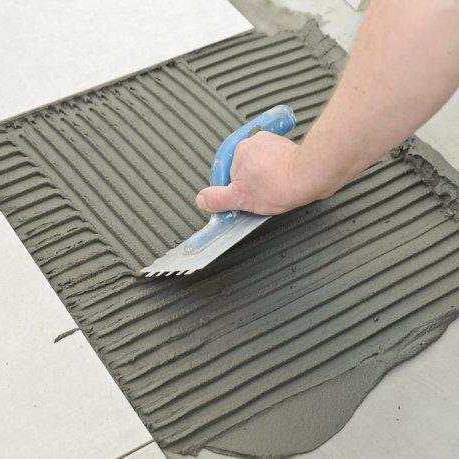
Oct . 01, 2025 12:45 Back to list
HPMC for Tile Adhesive: Stronger Bond, Water Retention?
What Contractors Really Need to Know About HPMC in Tile Adhesives
If you’ve ever mixed a thin-set that felt “just right,” odds are there was a touch of hpmc for tile adhesive in it. To be honest, this ingredient is the quiet hero behind workability, water retention, and non-sag—three things site supervisors obsess over when deadlines loom and tiles won’t stay put.

Why it matters now: quick snapshot of the market
Construction’s shifting toward large-format porcelain, faster programs, and skim-coat thin sets. Actually, that mix of demands lifts the bar for polymer systems and cellulose ethers. The trend is clear: formulators favor higher water-retention grades and faster hydration profiles of hpmc for tile adhesive to hold open time and improve early grab without punishing pot life. Many customers say they can shave 5–10 minutes off mixing and still get creamy spreadability—surprisingly consistent across climates.
Product snapshot: TILE BONDING ADDITIVES (HPMC blend)
Origin: NO.1 BUILDING, TECHNOLOGY CERTER, HIGH-TECH ZONE, SHIJIAZHUANG CITY, HEBEI PROVINCE, CHINA. Product type: Mixture for exclusive usage (first released 2019-09-18 03:58:16). Real-world performance may vary with cement type, aggregates, and climate.
| Parameter | Typical value (≈) | Method/Ref |
|---|---|---|
| Appearance | Free-flowing white powder | Visual |
| Viscosity (2% @20°C) | ≈ 75,000 mPa·s | Brookfield RV, ASTM D2196 |
| Moisture | ≤ 5.0% | KF, ASTM E203 |
| pH (2% dispersion) | 6.5–8.5 | ISO 976 |
| Water retention in mortar | ≥ 95% | Aligned with ISO 13007/EN 12004 |
| Particle size | ≥ 98% passing 100 mesh | Sieve |
| Gelation temperature | ≈ 70–75°C | Internal |
| Recommended dosage | 0.2–0.6% of dry mix | Formulation guide |
Process flow and field methods (short version)
- Materials: Portland cement, graded silica sand, RDP, hpmc for tile adhesive, defoamer, optional starch ether.
- Blending: Pre-mix powders; add hpmc for tile adhesive last to ensure uniform dispersion; 8–12 min ribbon-mixer cycle.
- On-site mixing: 5.0–6.5 L water per 25 kg bag (check spec); mix 3 min, rest 2 min, remix 30 s. I guess everyone has their ritual here.
- Testing: Open time (EN 1346), tensile adhesion (EN 1348), slip (EN 1308), workability window; viscosity per ASTM D2196.
- Service life: Adhesive shelf life ≈ 12 months sealed; installed systems commonly 25+ years when designed to ISO 13007 exposure class.
- Industries: Residential/commercial interiors, façades, transit hubs, pools (with compatible polymer systems).
Performance notes and advantages
With the right grade of hpmc for tile adhesive, contractors report: creamier trowel feel, longer open time (≥ 20 min target), less slip on verticals (≤ 0.5 mm), and better early strength. In fact, water retention pushes cement hydration just enough to reduce dusting and rework.
Vendor landscape (pragmatic view)
| Vendor | Core strength | Lead time | Certs | Customization |
|---|---|---|---|---|
| CNJZ Chemical (TILE BONDING ADDITIVES) | Consistent viscosity, strong water retention | ≈ 2–4 weeks | ISO 9001, REACH-ready, MSDS | Viscosity/pH/fast-dissolve options |
| Regional Trader | Flexible MOQs | Varies (stock-based) | Supplier-declared | Limited reactivity to specs |
| EU Brand | Premium technical support | ≈ 4–6 weeks | ISO 9001/14001 | Broad grade library |
Customization and QA
Options include fast-dissolving grades for cold water, viscosity ranges (40k–200k mPa·s), and anti-sag boosters (starch ether synergy). Batch COAs typically list viscosity, moisture, pH, residue-on-sieve, and water retention. It seems that consistent milling and de-agglomeration make the real difference in daily production.
Field cases (quick hits)
- Coastal hotel façade: switching to higher-retention hpmc for tile adhesive cut tile slip by ~40% and lifted open time to 25 min (EN 1346).
- Hot-climate logistics hall: fast-hydrating grade preserved workability under 35°C, improving early grab without compromising adjustability.
Authoritative references
- ISO 13007-1: Ceramic tiles — Grouts and adhesives — Part 1: Definitions and specifications. https://www.iso.org/standard/53740.html
- EN 1348: Adhesives for tiles — Determination of tensile adhesion strength. https://standards.iteh.ai/catalog/standards/cen/b8a2d9c0-bc15-4c34-9db7-3b6573cf5118/en-1348-2007
- EN 1346: Adhesives for tiles — Determination of open time. https://standards.iteh.ai/catalog/standards/cen/3e3d1f0e-1ea9-403d-b243-6b7bc4f04b4c/en-1346-2007
- EN 1308: Adhesives for tiles — Determination of slip. https://standards.iteh.ai/catalog/standards/cen/6eab2e9a-2f3b-4a9f-8852-17c2a10f3a1f/en-1308-2007
- ASTM D2196: Rheological properties by rotational viscometer. https://www.astm.org/d2196
-
Cellulose Ether | High Purity, Fast Hydration, Stable Flow
NewsNov.17,2025
-
Cellosize HEC Thickener – High Purity, Fast-Dissolving
NewsNov.17,2025
-
Cellulose Ether: High-Purity Liquid Thickener, HEC Cellulose
NewsNov.17,2025
-
VAE Powder (RDP): High Adhesion & Flexibility for Mortars
NewsNov.17,2025
-
Cellulose Ether: High Purity, Fast-Dissolving, Stable Flow
NewsNov.17,2025
-
Cellosize HEC Thickener – High Purity, Fast-Dissolving
NewsNov.11,2025







